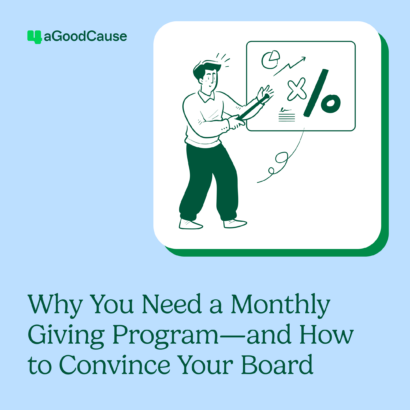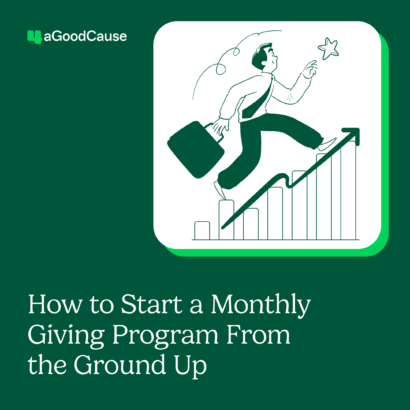Spring. A time to refresh, renew and reorganize. Many of us get that “spring cleaning” bug this time of year and as a nonprofit, this can be a great opportunity to reassess current processes and do some spring cleaning of your own related to donor records and databases.
A donor database or CRM (customer relationship management) tool is a great place to start. If you have one, you know this to be the holy grail of donor records—the place to track donor touchpoints, conversations, donation history, event attendance and the like.
Your donor database can also provide helpful information about your donors—their birthdays, where they work, their presumed income level, education level and interests. It’s a tool that may help you with quarterly or annual fundraising projections and goal setting.
In short, it’s the best way to keep up with your donors in one spot. But that information is only as good as the processes established to keep it updated.
First, figure out what donor information is important
To start, we have a great resource for how to customize your CRM with tags, notes, special fields and how to pull reports. What is more important is how your organization will use your donor information. Will you simply use it to track donations and donor actions? Will you use it to create drip email campaigns or touchpoints for special days such as anniversaries and birthdays? Will you use it to create donor-specific fundraising asks (i.e., capital campaigns, outreach to lapsed donors, outreach to high-income donors)?
From there, identify a list of the most pertinent pieces of information to keep track of in your donor database. And then, set processes for how that data is to be entered. Will you use full names, nicknames, phone numbers with dashes or parenthesis, state abbreviations? Setting up a standardized process for what and how the data is entered helps keep data uniform and makes pulling donor reports easier.
Involve your team
Some of your donor CRM data will automatically update if you have donation pages or email systems connected to your database. Each time a donor receives an email or makes an online donation, for example, can automatically code to their record.
For those data points that are not automatic, establish a process for team input. For instance, when making a phone call to a donor, ensure that team members first open the donor’s record so that it is in front of them when making the call. Look for things that can be updated on the spot—birthdays, place of work, special notes or information gleaned from the call.
Once a process for data inputs has been established, segment donor records as a team. Use tags and search filters to ‘assign’ key donors and donor types to certain team members. This makes it easier to have routine, personal touchpoints with donors because while it can be daunting to try and do all of them at once, alone, when you divide and conquer, you’ll see more success.
Information to keep close tabs on
While birthdates never change, there are pieces of donor information that will change quicker than others. It’s important to develop a system for continuous management and updating of your donor records to have the cleanest information possible.
One such piece of information is donors’ job titles and company locations. The Great Resignation has brought a shake-up in where people work, how long they stay at a company or in a position, or if they are even working at all. As fundraising goes, this is a huge piece of data to inform your projects—if you don’t know that a good portion of your donors are no longer working (or have changed positions with smaller or larger salaries) it can impact your result of donations.
Establish a process for routine maintenance of:
- Company or place of employment
- Part-time, full-time or ‘null’ employment status
- Current phone number
- Current address
- How often they donate
- How much/average donation amounts (this could be automated if they are an online-only donor)
- Key milestones (anniversaries, new children/grandchildren, weddings, etc.)
- Longevity with your organization
Ideas to keep your donor database up to date
We recommend the following to keep your donor lists as clean as possible:
- Send a short donor survey to request updates to (or confirmation of) key information
- Automate as much as you can – sync your emails and online donations directly to donor records
- Find and merge duplicate records
- Review donor tags (e.g., lapsed donor, engaged donor, etc.) so that future correspondence is sent to the correct list(s)
- Work with your team to set expectations for donor records management
- Have team meetings to go over key donor records and touchpoints
Most of the suggestions above should be done on a routine basis—annually—except for team meetings which are most effective if done weekly or biweekly, depending on team size and quantity of touchpoints throughout the month.
The more concrete your processes are for maintaining donor records, the cleaner your donor database will be—and ultimately, with these processes in place, you will find yourself spending less time on clean-up and more time on donor engagement. That is the sweet spot of fundraising.



